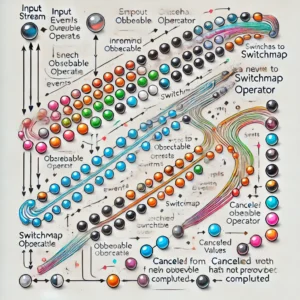Clean code and code refactoring are essential components of software development. Clean code refers to code that is easy to read, understand, and maintain. It follows a set of conventions, standards, and practices that make it simple, concise, and expressive. On the other hand, code refactoring involves improving the quality of existing code by restructuring it without changing its external behavior.
Developers often face challenges when it comes to writing clean code and refactoring existing code. Poorly written code can lead to bugs, software defects, and other issues that can impact the performance and functionality of the software application. Therefore, it is important to follow best practices for clean code and code refactoring to ensure that the code is of high quality and easy to maintain.
In this article, we will discuss some of the best practices for clean code and code refactoring. We will explore why clean code and code refactoring are important, the advantages of following best practices, and some techniques that developers can use to write clean code and refactor existing code. By following these best practices, developers can improve the quality of their code and create software applications that are easy to maintain and debug.
Understanding Clean Code
Clean code is a term used to describe computer code that is easy to read, understand, and maintain. It is written in a way that makes it simple, concise, and expressive. Clean code follows a set of conventions, standards, and practices that make it easy to read and follow.
Clean code is essential for software development because it helps to reduce the complexity of code, making it easier to understand and maintain. It also helps to reduce bugs, improve performance, and increase the efficiency of development teams.
To write clean code, developers should follow some best practices, such as:
- Consistency: Use consistent naming conventions, formatting, and coding style throughout the codebase.
- Simplicity: Keep the code simple and avoid unnecessary complexity. Write code that is easy to understand and maintain.
- Readability: Write code that is easy to read and understand. Use descriptive names for variables, functions, and classes.
- Modularity: Break the code into small, modular components that can be easily reused and tested.
- Testability: Write code that is easy to test. Use unit tests to ensure that the code is working as expected.
- Refactoring: Refactor the code regularly to keep it clean and maintainable.
By following these best practices, developers can write clean code that is easy to read, understand, and maintain. This, in turn, leads to better software development and a more efficient development process.
Principles of Clean Code
Writing clean, understandable, and maintainable code is crucial for every developer to master. Clean code is written in a way that makes it simple, concise, and expressive. In this section, we will discuss some of the key principles of clean code that every developer should follow.
Self-Documenting Code
Self-documenting code is code that is written in a way that is easy to read and understand without any additional documentation. This means that the code should be written in a way that makes its purpose and functionality clear. Developers should strive to write code that is self-explanatory and does not require additional comments or documentation to be understood.
Consistent Naming Conventions
Consistent naming conventions are critical for writing clean code. Developers should use descriptive names for variables, functions, and classes that accurately reflect their purpose and functionality. Additionally, naming conventions should be consistent throughout the codebase to make it easier to read and understand.
Function and Class Sizes
Function and class sizes should be kept small and focused. Functions should ideally be no longer than 15 lines of code, and classes should be no longer than 200 lines of code. Breaking up larger functions and classes into smaller, more focused ones makes the code easier to read, understand, and maintain.
Error Handling
Error handling is an essential part of writing clean code. Developers should handle errors in a consistent and predictable way, using clear error messages and logging to help identify and resolve issues. Additionally, error handling code should be separated from the main code logic to make it easier to read and understand.
Overall, following these principles of clean code can help developers write code that is easier to read, understand, and maintain. By writing self-documenting code, using consistent naming conventions, keeping function and class sizes small and focused, and handling errors in a consistent and predictable way, developers can create code that is more reliable, maintainable, and scalable.
Code Refactoring Basics
Code refactoring is the process of improving the existing codebase without changing its external behavior. It involves restructuring the code to make it more readable, maintainable, and efficient. Refactoring is an essential part of software development that helps to eliminate technical debt, improve code quality, and reduce the cost of maintenance.
Refactoring can be done at any stage of the software development lifecycle, but it is usually done after the initial development phase. It is important to note that refactoring should not be confused with optimization. Optimization is the process of improving the performance of the code, while refactoring is the process of improving its readability and maintainability.
There are several reasons why code refactoring is necessary. First, it helps to reduce the complexity of the codebase. Complex code is difficult to understand and maintain, and it can lead to bugs and errors. Refactoring simplifies the code, making it easier to understand and maintain.
Second, refactoring helps to eliminate code smells. Code smells are indicators of potential problems in the code, such as duplicated code, long methods, and unused variables. Refactoring helps to identify and eliminate these code smells, making the code more efficient and easier to maintain.
Finally, refactoring helps to reduce technical debt. Technical debt is the cost of maintaining and updating the codebase over time. Refactoring helps to reduce technical debt by improving the quality of the code, making it easier and cheaper to maintain in the long run.
In summary, code refactoring is an essential part of software development that helps to improve the quality of the codebase. It involves restructuring the code to make it more readable, maintainable, and efficient. Refactoring helps to reduce the complexity of the codebase, eliminate code smells, and reduce technical debt.
Best Practices for Code Refactoring
Code refactoring is an essential process that helps improve the quality of code, making it easier to maintain and update. Here are some best practices to follow when refactoring code:
Start with a solid understanding of the code
Before beginning the refactoring process, it’s essential to have a solid understanding of the code you’re working with. This means taking the time to read through the code, understand its purpose, and identify any areas that need improvement. It’s also a good idea to document what you learn about the code, including any assumptions you make.
Prioritize refactoring tasks
Not all code needs to be refactored, and some code may require more attention than others. It’s important to prioritize refactoring tasks based on their impact on the codebase and the potential benefits of refactoring. This means focusing on areas of the code that are most critical to the application’s functionality and those that are most likely to cause problems.
Break down complex functions
Complex functions can be challenging to read and understand, making them difficult to maintain and update. Breaking down complex functions into smaller, more manageable functions can make the code easier to read and understand. This can also make it easier to identify and fix problems in the code.
Write unit tests before refactoring
Writing unit tests before refactoring can help ensure that the code continues to function correctly after changes have been made. This can also help identify any problems in the code before refactoring begins, making it easier to identify the source of any issues that arise during the refactoring process.
Make incremental changes and test as you go
Making incremental changes to the code and testing as you go can help ensure that the code continues to function correctly throughout the refactoring process. This can also help identify any issues that arise early on, making it easier to fix them before they become more significant problems.
By following these best practices, developers can improve the quality of their code and make it easier to maintain and update over time.
Refactoring Techniques
Refactoring is the process of improving the code quality without changing the functionality of the code. It helps in reducing technical debt and improving the maintainability of the code. Here are some commonly used refactoring techniques:
Red-Green Refactor
Red-Green-Refactor is a technique used in Test-Driven Development (TDD). In this technique, the developer writes a failing test case (red), then writes the code to pass the test case (green), and finally refactors the code to improve its quality (refactor). This technique helps in ensuring that the code is testable and maintainable.
Composing Methods
Composing Method is a technique used to break down a large method into smaller, more manageable methods. This technique helps in improving the readability and maintainability of the code. It also makes the code more modular and reusable.
Simplifying Conditional Expressions
Simplifying Conditional Expressions is a technique used to simplify complex conditional expressions. This technique helps in improving the readability and maintainability of the code. It also reduces the risk of bugs and makes the code more efficient.
Making Method Calls Simpler
Making Method Calls Simpler is a technique used to simplify complex method calls. This technique helps in improving the readability and maintainability of the code. It also reduces the risk of bugs and makes the code more efficient.
Dealing with Generalization
Dealing with Generalization is a technique used to remove duplication in the code by creating more general methods or classes. This technique helps in improving the readability and maintainability of the code. It also makes the code more modular and reusable.
Meaningful variable and function names
Meaningful variable and function names is a technique used to use descriptive and meaningful names for variables and functions. This technique helps in improving the readability and maintainability of the code. It also makes the code more self-explanatory.
Proper indentation and formatting
Proper indentation and formatting is a technique used to format the code properly. This technique helps in improving the readability and maintainability of the code. It also makes the code more consistent and easier to understand.
Minimal comments and self-explanatory code
Minimal comments and self-explanatory code is a technique used to write code that is self-explanatory and requires minimal comments. This technique helps in improving the readability and maintainability of the code. It also reduces the risk of bugs and makes the code more efficient.
Avoiding code smells
Avoiding code smells is a technique used to identify and remove bad coding practices that can lead to bugs and reduce the maintainability of the code. This technique helps in improving the overall quality of the code and reducing technical debt.
These are some of the commonly used refactoring techniques that can help in improving the quality of the code. By using these techniques, developers can ensure that the code is maintainable, testable, and efficient.
Common Code Smells and Red Flags
When writing code, it is important to keep it clean and maintainable. However, there are common code smells and red flags that developers should be aware of to ensure the code stays clean and maintainable. Code smells are characteristics of code that may indicate a problem, while red flags are warning signs that the code may have issues. In this section, we will discuss some of the most common code smells and red flags that developers should be familiar with.
Duplicated Code
Duplicated code is one of the most common code smells. It occurs when the same code is repeated in multiple places within the codebase. This can lead to maintenance issues, as any changes to the duplicated code must be made in multiple places. To avoid this, developers should use the extract method technique, which involves creating a new method that contains the common code and replacing the duplicates with calls to that method.
Long Methods and Functions
Long methods and functions are another common code smell. They occur when a method or function is too long, making it difficult to read and understand. To avoid this, developers should aim to keep their methods and functions short and focused. They can use the extract method technique to break up long methods into smaller, more focused methods.
Complex Conditional Statements
Complex conditional statements are a red flag that the code may be overly complex and difficult to maintain. They occur when there are too many conditions in an if statement or switch statement. To avoid this, developers should aim to simplify their conditional statements by breaking them up into smaller, more focused statements.
Excessive Nesting
Excessive nesting is another red flag that the code may be overly complex. It occurs when there are too many levels of indentation in the code. To avoid this, developers should aim to keep their code flat by breaking up complex logic into smaller, more focused methods.
Large Class or Module Sizes
Large class or module sizes are a red flag that the code may be too complex and difficult to maintain. They occur when a class or module has too many responsibilities. To avoid this, developers should aim to keep their classes and modules small and focused. They can use the extract class technique to break up large classes into smaller, more focused classes.
Benefits of Clean Code and Code Refactoring
Clean code and code refactoring are essential practices in software development. They help improve code quality, enhance performance, and reduce technical debt. In this section, we will explore the benefits of clean code and code refactoring in more detail.
Improved code quality
Clean code and code refactoring help improve code quality by making it more readable, maintainable, and understandable. This, in turn, reduces the likelihood of bugs and errors and makes it easier to find and fix them when they do occur. Code that is easy to read and understand is also easier to modify and extend, which is essential for future development.
Enhanced performance
Clean code and code refactoring can also enhance the performance of your software. By removing unnecessary code, optimizing algorithms, and improving data structures, you can make your software faster and more efficient. This can lead to better user experiences and increased customer satisfaction.
Reduced technical debt
Technical debt is the cost of maintaining and supporting software that has not been properly maintained or refactored. By cleaning up your code and refactoring it regularly, you can reduce technical debt and avoid the costs associated with maintaining legacy code. This can also make it easier to introduce new features and functionality in the future.
Easier future development
Clean code and code refactoring make it easier to develop new features and functionality in the future. By keeping your codebase clean and well-organized, you can reduce the time and effort required to add new features or fix bugs. This can help you stay ahead of the competition and deliver high-quality software to your customers.
Tools for Code Refactoring
Code refactoring can be a daunting task, but with the right tools, it can be a smooth and efficient process. Here are some of the best tools for code refactoring:
Integrated Development Environments
Integrated Development Environments (IDEs) are software applications that provide comprehensive facilities to computer programmers for software development. IDEs offer a range of features that help with code refactoring, such as:
- Code highlighting and completion
- Navigation and search tools
- Debugging tools
- Refactoring tools
Some of the most popular IDEs for code refactoring include:
Code Review Tools
Code review tools help developers identify and fix issues in their code. These tools can also help with code refactoring by providing suggestions for improving code quality. Some popular code review tools include:
Version Control Systems
Version Control Systems (VCS) are software tools that help manage changes to source code over time. VCS can help with code refactoring by allowing developers to easily revert to previous versions of code if necessary. Some popular VCS for code refactoring include:
In conclusion, using the right tools can make code refactoring a much smoother and efficient process. IDEs, code review tools, and version control systems are just a few examples of the tools available to developers for code refactoring.
Conclusion
In conclusion, keeping code clean and maintainable is crucial for any software development project. Refactoring is a key process for achieving this goal, as it helps to improve the code quality without changing its functionality.
By following best practices for code refactoring, developers can ensure that their code remains easy to understand, modify, and extend over time. Some of the best practices for code refactoring include:
- Writing unit tests to ensure that the code behaves as expected after refactoring
- Refactoring small pieces of code at a time, rather than trying to tackle large chunks all at once
- Using automated tools to identify areas of code that could benefit from refactoring
- Refactoring code early and often, rather than waiting until it becomes too complex to work with
In addition to these best practices, developers should also strive to write clean code from the outset. This includes following coding standards, writing self-documenting code, and avoiding code smells such as duplicated code or overly complex logic.
Overall, by prioritizing clean and maintainable code, developers can ensure that their software remains flexible and adaptable over time. By embracing code refactoring as a key part of the development process, they can continuously improve the quality of their code and avoid technical debt.






